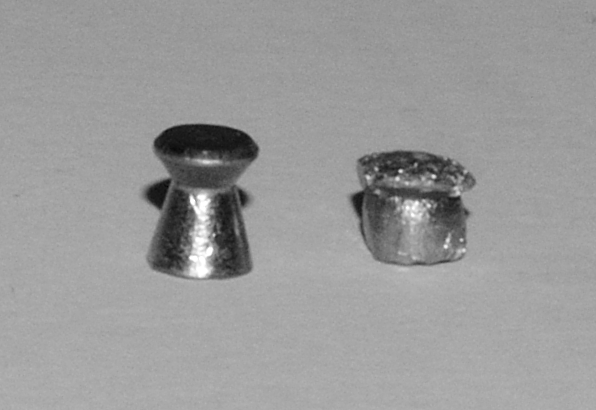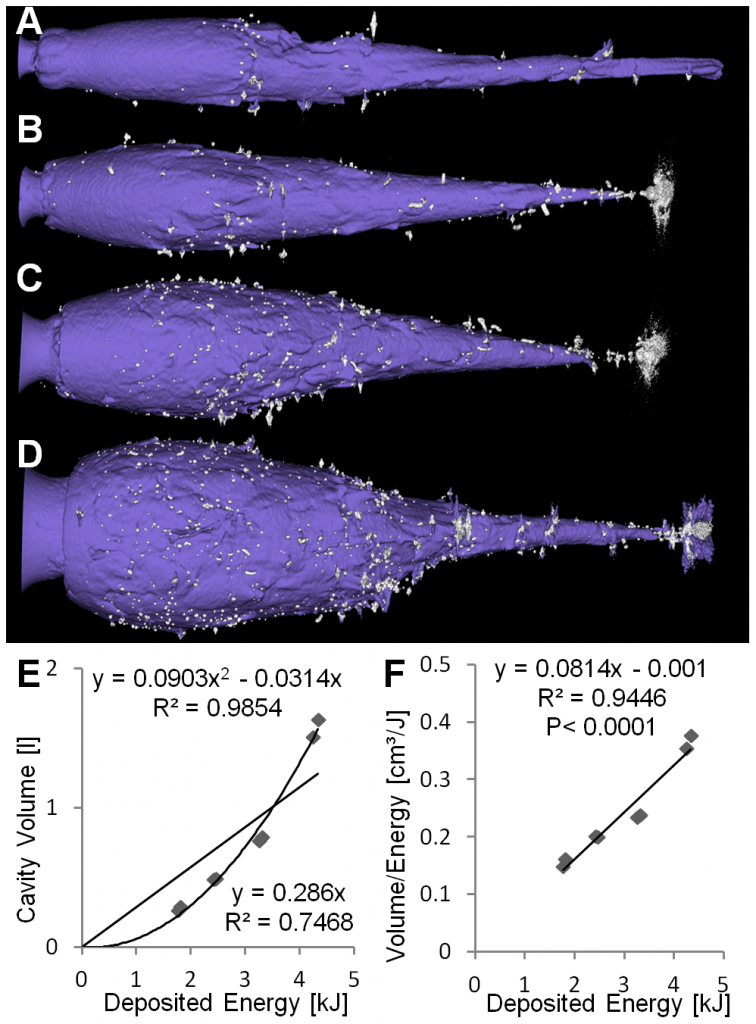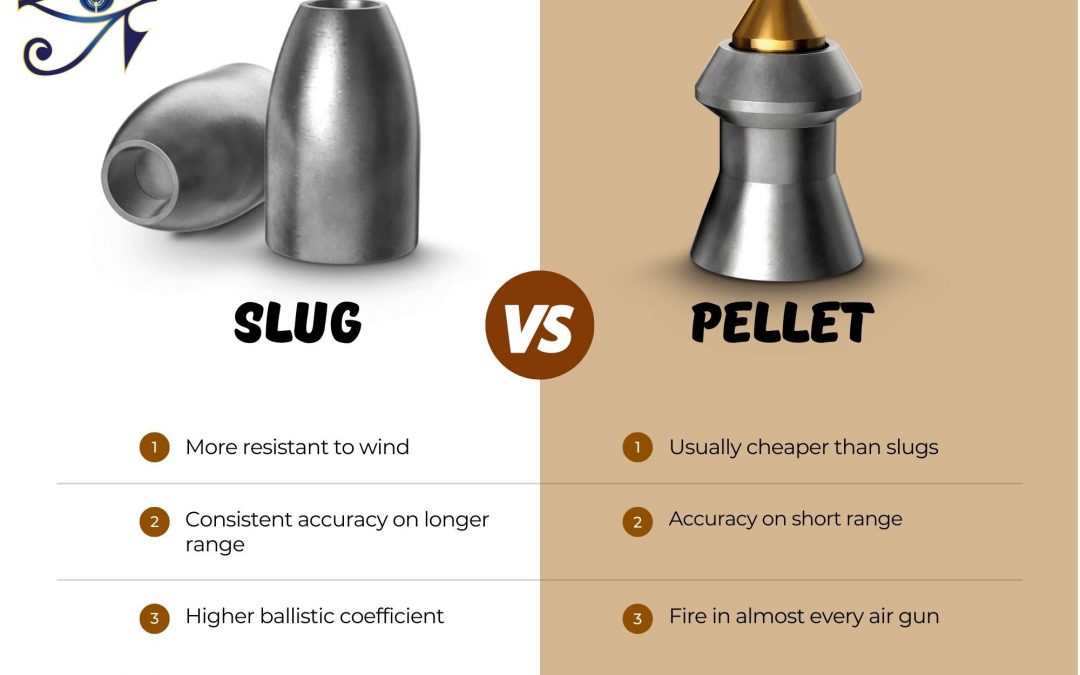Today we are talking all about this kind of new debate pellets versus slugs.
One of the hot new trends in the airgun industry right now has been this new ammunition type slugs for small bore airguns specifically. Because slugs have been used in big bore guns and obviously on the firearm side for a long, long time.
But as far as where they fit into the airgun world, you may have seen your favorite hunter using these in a hunt recently or maybe you’ve just seen some posts on forms about them. Maybe you’re not so sure where they fit into your air gunning world. So we’re going to try and answer some of those questions today.
When you should be using slugs versus pellets?
What kind of advantages they might offer and where pellets are more appropriate than an air rifle slugs? So all those things we’re going to kind of dive in, take a look at the performance in terms of terminal ballistics of a slug versus a pellet and try and get some good information that’s going to make the decision a little bit easier for you guys.
The pros for slugs
- They hit very hard.
- They retain a lot of velocity and energy as they travel
- More resistant to wind
- Higher ballistic coefficient
- Consistent accuracy on longer range (100m+)
Cons For Slugs
- More expensive than pellets (usually)
- Not compatible with all airguns
- May travel through the prey
- Your barrel may need cleaning more often
.Pros For Pellets
- Cheaper than slugs
- Accuracy on short range (up to 60m)
- Fire in almost every air gun
Cons For Pellets
- Lower ballistic coefficiency
- More susceptible to wind
- Less accuracy after 100m+
We threw out that hot buzzword in the industry, and this is firearms, air grounds across the board when you talk about long range shooting, ballistic coefficient. Now, for those of you that aren’t aware ballistic coefficient is basically just the expression of a projectiles ability to overcome air resistance or fight drag. And in layman’s terms, the higher the ballistic coefficient, the better a projectiles ability to fight that resistance, that drag in flight, which means it’s going to be in theory, more effective at retaining its energy, retaining its velocity, as it flies down range.
Now, while we’re not going to be calculating the ballistic coefficient of each of these rounds, basically it’s okay to assume in this instance, that out of the same gun, that your slugs are going to have a higher BC, carry more energy than your pellets are and that’s okay. For today’s testing, we’re going to go 22 caliber all the way through just because that’s where all of the manufacturers have come to play to start with in that slug market.
Slugs Tested
- FX Hybrid Slugs weighing in at 22 grains
- JSB Knockout, the 216-variety coming in at 25.4 grains
- H&N HP slug 23 grain
Since all our slugs are hollow points, we have the same thing on the pellet side.
Pellets Tested
Now we need a gun to shoot all these projectiles in that we know is going to shoot them well with good repeatable accuracy. So, we’ve chosen a 22 caliber with a Lothar Walther poly barrel as this thing seems to shoot slugs quite well as it does pellets.
We know we’re going to get a lot of energy and we’re going to be able to hold good accuracy with all of these projectiles. The slugs and pellets are tested on some ballistic gel.

40 Meters Ballistic Gel Test Results Pellets vs Slugs
| Pellet/Slug | Penetration | Expansion on Impact | Expansion % of Ammo |
| Predator Polymag | 152mm | 7.1mm | 23% larger |
| JSB Hades | 107.95mm | 7.6mm | 28% larger |
| H&N Barracuda | 139.7mm | 6.9mm | 21% larger |
| H&N Slug | 165mm | 6.5mm | 16% larger |
| FX Hybrid | 82.55mm | 10.02mm | 47% larger |
| JSB Knockout Slugs | 177mm | 6.6mm | 17% larger |

After looking over all this data we’ve now gathered, really the big takeaways are that JSB Hades is doing a great job in terms of both expansion and not over penetrating. As far as pellets go at just 108mm of penetration there and 28% larger diameter once it came out of the gel, as well as doing a great job of expansion overall.
On the slug side, I mean, it’s obvious with the data that FX Hybrids do a great job expanding to over 10 millimeters from their starting size and 47% expansion. Then with just 83mm of penetration is also impressive. This means they’re dumping a lot of energy with both that Hades and this FX hybrid in a relatively short distance, which is exactly what you want if you’re hunting.
So now that we’ve got some data, seen some results down range in the gel, let’s talk about some pros for pellets and some pros for slugs.
Now, starting with pellets. If you look at it, you do get some good expansion out of these hollow point pellets and they do a pretty good job as far as cavitation goes and damage, affected area upon initial impact. And another pro for me, at least there’s much less potential risk with a pellet once it passes through game or even if you miss, than there is with a slug.
Slug Advantages
Now for slugs. There are two real advantages that I see. Now, this all stems from the fact that they deliver more knock down power down range, right? So even without good expansion that we saw out of the FX Hybrid, you don’t get as much expansion out of the other two options here. But even without that, they are hitting that gel hard, which means you’re going to carry more energy and give you the ability to maybe take a little bit larger game more effectively at closer ranges or conversely stretch your legs out and shoot further than you can with a pellet.
Slug Downsides
Now, from a downside perspective, of course, we know that slugs have a relatively high price point, especially when compared with those pellets, but you’re going to know that going in. So yes, a little bit of a con, but it’s a known con, right? And the other real downer for me is that slugs on the whole, there are exceptions to this, but on the whole do not shoot as well as pellets do in as wide a variety of guns. The other downside is you may have to clean the barrel regularly. This will be down to the fact that slugs have a far greater contact with the barrel, this increased contact area increases the friction between the slug and the barrel. Hence you may need to clean out the excess lead debris.
What we mean by that is that not all guns are this HM1,000X. Not all guns have a poly barrel,. Not all guns are FXs that have interchangeable liners. Now there’s not a great option for springers, multi pumps, lower powered stuff out there as far as slugs go right now, but who knows that could very well change in the future.
Suitability
Slugs do not suite every airgun so we suggest that you get samples packs that can be found on our air rifle slugs page.
Pellets Downsides
And as far as the negatives for pellets go, I think they’re pretty obvious for most folks. You’re not going to be able to shoot them as far consistently, especially when you introduce wind into that equation, you’re going to have more drop at distance. And, of course, the energy side, the low BC, you are going to have more energy and velocity lost over the course of that pellet’s flight path than you’re ever going to see with a slug.
So suffice it to say that really, you have to answer this question for yourself and for your applications. I know for me, I’m going to be shooting pellets probably 90% of the time. There are going to be a few of those instances where I’m going to go out pesting at longer ranges where slugs are going to give me an advantage.
More: Frequently asked questions on airguns.
More: New air rifles vs Used.
Slugs For Sub 12ft .22 Calibre
Slugs For Sub 12ft .177 Calibre
https://ihunter.co.uk/product/zan-projectiles-177-4-5mm-10gr-slug-qty-400-sub12-suitable-l847/



